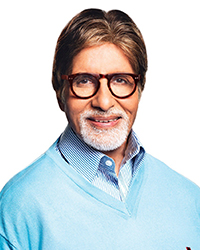
Gone Bollywood
Bollywood is seen as a bright, colourful film genre synonymous with elaborate song and dance routines and melodramatic love triangles.
By Lesley PorterAs part of the Indian film industry—the largest in the world—Bollywood’s impact goes much further than ornate costumes and songs.
It started out as another form of entertainment for Meera Kachroo, a sessional lecturer in the College of Arts and Science who is currently teaching a Bollywood film class in the Department of Religious Studies and Linguistics. While attending graduate school, however, she and her colleagues would host Bollywood movie screening nights and use the opportunity to critically examine the films at a deeper level.
“I started to really appreciate the way that you can use Bollywood as a medium for talking about culture and history at large,” said Kachroo.
When she came to the U of S three years ago, she taught a pre-existing version of the course, which consisted mostly of older films that were longer in length and shot entirely in black and white. Following a lukewarm reaction from her students, Kachroo updated the class to include more recent, contemporary films that speak directly to cultural issues in India, such as politics, religion, art, gender and history.
“The earliest film we watch is from 1975, and we move very quickly to the ‘90s and the 2000s,” she said. “There’s a lot of material to reflect on and challenge a lot of the assumptions in those Bollywood films, to move past the pure enjoyment of them and into a more critical stance on movies.”
Those mainstays of the genre—the wedding and the dance routines—have an inherent entertainment value, said Kachroo. Contextually, however, they also serve as a very potent display of wealth, privilege and familial ties in a country where one’s socioeconomic status carries significant weight.
“That becomes very important,” she explained, “in a very populist country to display the wealth of your family and your status in society. And it’s not so different in the West.”
The importance of family values is another hallmark that lends itself to the genre. While there is typically a love triangle or romantic conflict in a movie, it is for reasons that are not as commonly seen in the West.
“The problem encountered by the lovers is very often one of their family not approving,” explained Kachroo, adding that approval—or lack thereof—from parents and extended family is a huge obstacle for characters to overcome. Save for Romeo and Juliet, “it would be difficult to find that kind of motivation or obstruction in Hollywood movies.”
Another major difference between Bollywood and its North American counterpart is the actual movie-going experience. It is a much more collective event, said Kachroo, and more social than psychological.
“People go to movies in large groups and it’s a very social experience,” she said. “People don’t sit back and just get into the movie like we do here. It is totally the norm to socialize, to comment on the film, to interact with the characters.”
And why is that? Aside from the social experience that connects movie viewers with their friends and extended families, said Kachroo, “I think that’s just how it’s always been in India.”
Kachroo expects her students—particularly those who haven’t seen any Bollywood films—to learn about the industry and some of its key players, and how the films address contemporary Indian politics, history and cultural values. On a larger scale, Kachroo hopes to show the intrinsic value of popular culture found in media products such as movies.
“People don’t respect pop culture, but it’s becoming a bigger and bigger field of academic inquiry,” she said. “If you can look critically at those things that fascinate us, those things that can capture our attention, then we can find out a lot of things about ourselves and we can find out a lot of things about culture at large.”
Fast facts about Bollywood

Based in Mumbai, Bollywood is the Hindi language fragment of the larger Indian film industry, which produces about 1,000 films per year. Hollywood produces about half that number annually.
Bollywood is considered the largest movie industry in the world. In 2013, the number of cinema admissions in India alone was over two billion.
The first Bollywood movie was produced in 1899—11 years before the debut of the first movie made in Hollywood.
Bollywood actor Shah Rukh Khan is the third-richest actor in the world, behind only Merv Griffin and Jerry Seinfeld, respectively.
The most celebrated Bollywood actor is Amitabh Bachchan (nicknamed The Big B and pictured at right), who has appeared in over 150 films in his four-decade career. By comparison, Al Pacino has appeared in about 50 movies.
Outside of India, Bollywood movies are tremendously popular in Russia, southeast Asia, the Caribbean and eastern Africa.

